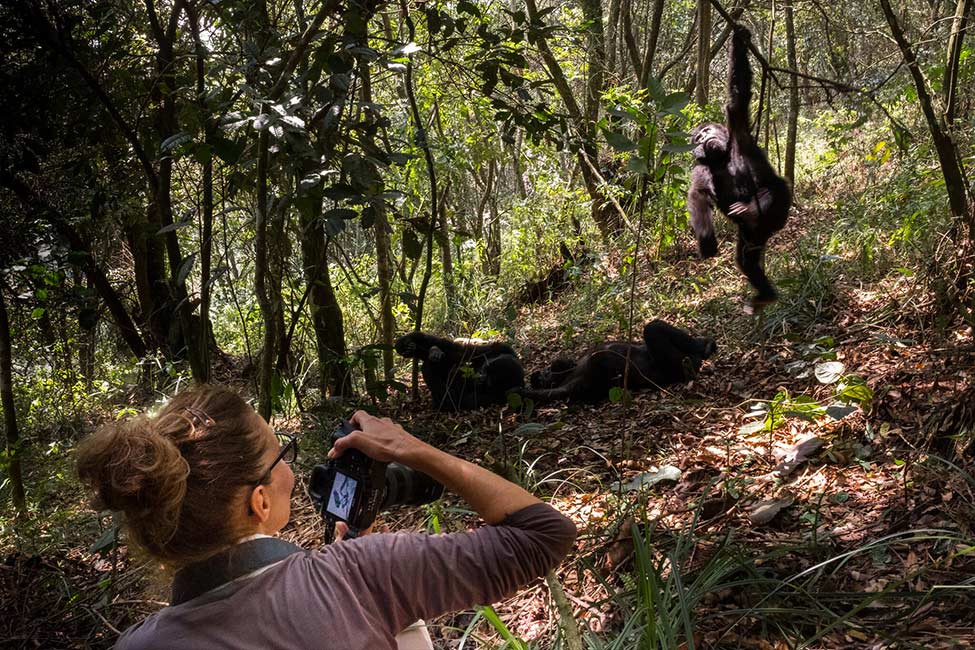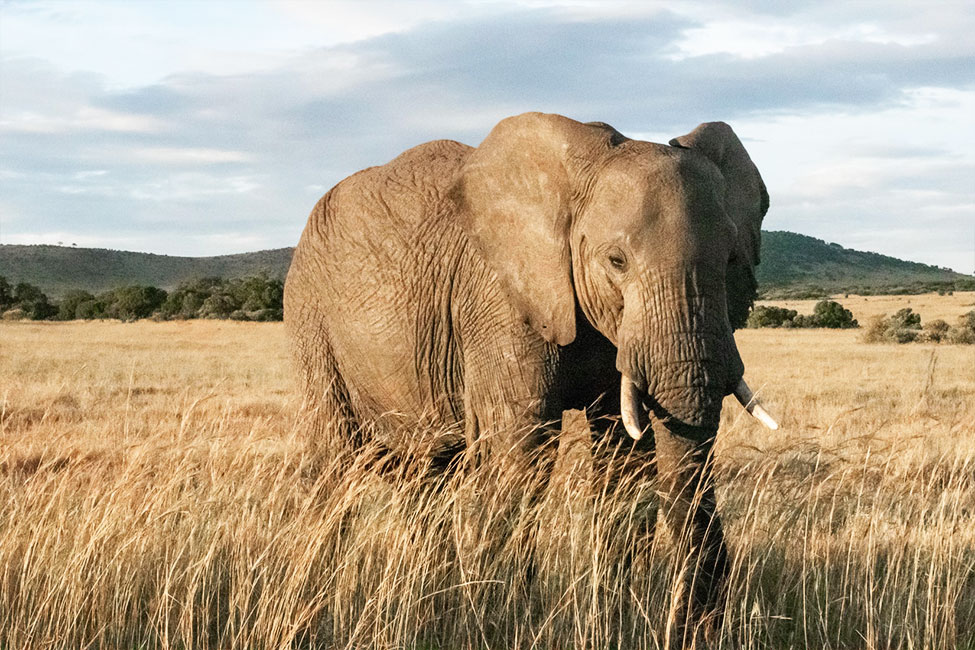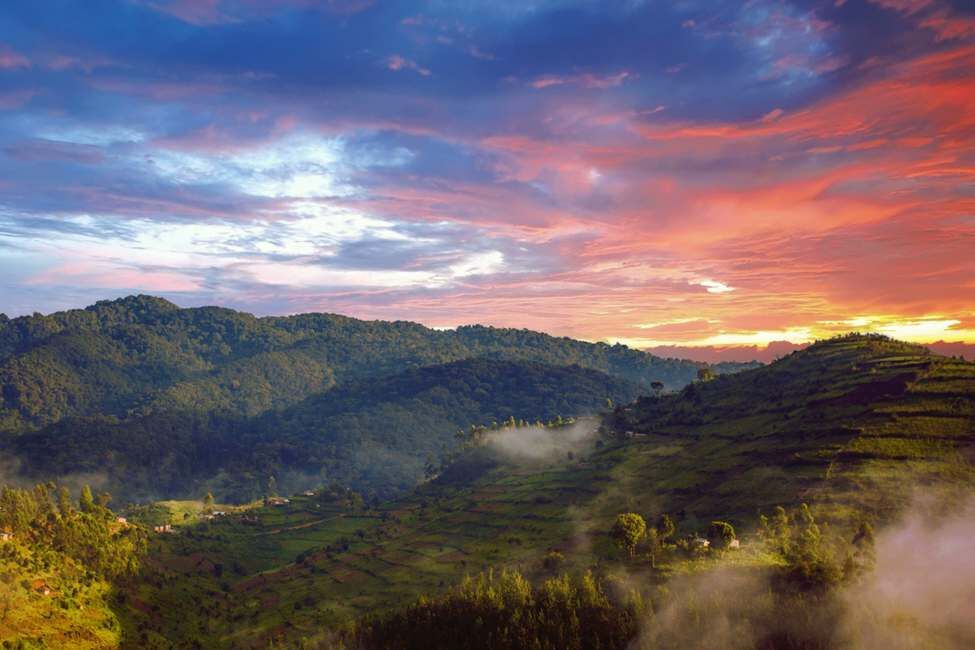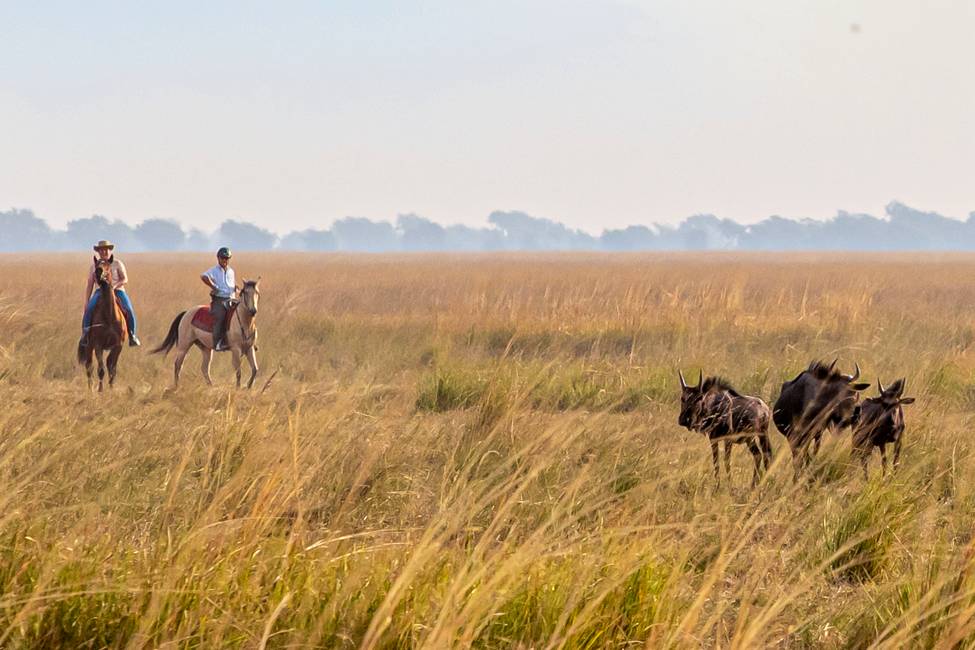Uncover the Mysteries of Bwindi Impenetrable Forest
Stretching majestically across the rugged slopes of the Albertine Rift Valley, Bwindi Impenetrable National Park in Uganda is a timeless rainforest oasis that has thrived since the last Ice Age.
Renowned for its unparalleled biodiversity, this ancient forest is home to an estimated 120 mammal species—including chimpanzees, forest elephants, duiker antelope, and several species of monkeys—making it a hotspot for wildlife enthusiasts. It’s also a haven for birdwatchers with its 23 highly localized Albertine Rift endemics.
And there’s more: You can find more than 200 butterfly species and 324 identified tree species here, 10 of which only exist in this area of East Africa.
But Bwindi’s most iconic residents are the endangered mountain gorillas. The forest’s estimated population of about 480 individuals makes up close to half of the world’s total. They are among the many reasons Bwindi Impenetrable Forest was designated as a UNESCO World Heritage Site in 1994.
Things to Do in Bwindi Impenetrable Forest
Whether you’re interested in wildlife encounters, cultural experiences, or outdoor adventures, Bwindi offers a range of activities to suit every traveler’s interests.
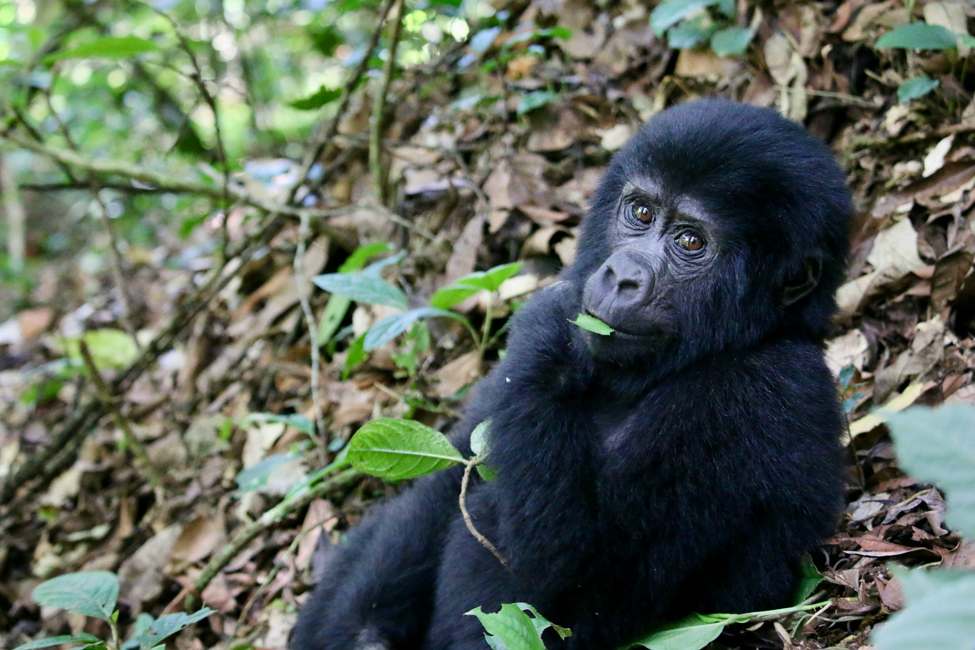
A curious young mountain gorilla watches the photographer Gabriel Schumacher during a Bwindi gorilla trek.
Gorilla Trekking
Gorilla treks are the main attraction of Bwindi. Accompanied by experienced guides, visitors embark on guided hikes through the dense forest to encounter habituated groups of mountain gorillas in their natural habitat. The trail you follow will depend on where the gorillas were the day before and tracking signs like crushed vegetation, broken plants that the gorillas might have been eating, and also fresh dung and footmarks.
Once you reach these magnificent primates, you’ll have a chance to observe them for an hour. Gazing into the soulful brown eyes of these gentle giants is an extraordinary privilege, offering an unparalleled wildlife encounter that is only available in East Africa.
Gorilla trekking permits are required to visit the gorillas and are issued by park authorities. Ujuzi arranges these ahead of your visit to ensure you won’t miss out on this once-in-a-lifetime opportunity. Learn more about the trekking experience and planning your trek in our complete guide to gorilla trekking.
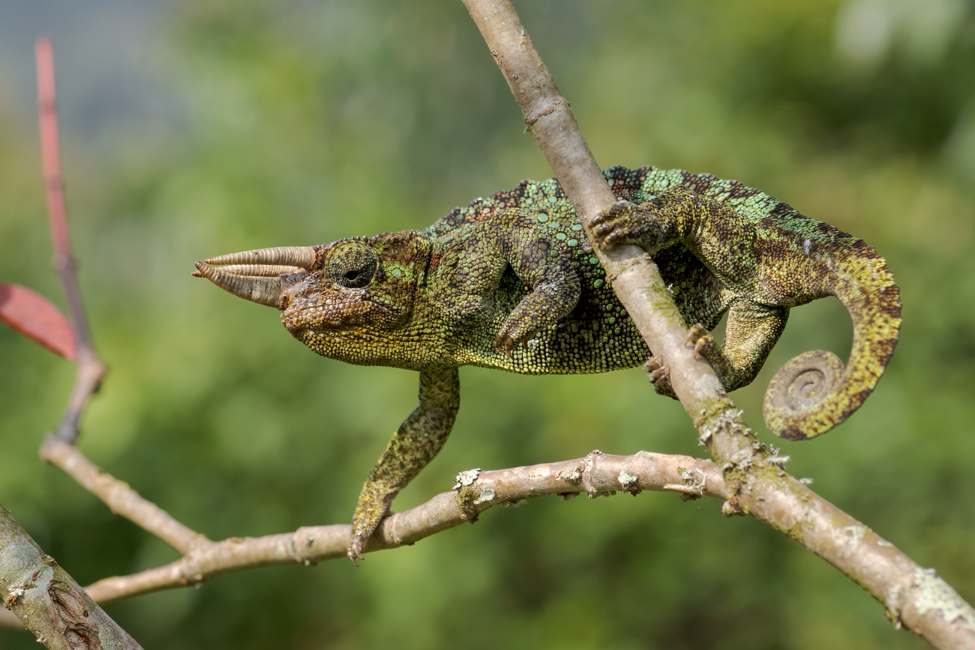
Observant visitors to Bwindi Impentrable National Park may be rewarded with a view of the fascinating three-horned Johnston’s chameleon (Trioceros johnstoni).
Nature Walks and Hiking Trails
A diverse network of hiking routes make Bwindi Impenetrable National park a little less … well … impenetrable! Seasoned hikers may enjoy a two-day walking safari from the north end of the park to the south, while almost anyone can enjoy a shorter guided nature walk to learn about the forest’s flora and fauna, including chameleons and monkeys like olive baboons, black-and-white colobus, and L’Hoest, red-tailed and blue monkeys. With extreme luck, you might spot a chimpanzee—but this is rare because they tend to stay in areas inaccessible to visitors. (If want a good chance of seeing chimpanzees on your safari, consult our guide to chimpanzee trekking.)
Each of Bwindi’s trails is rewarding in its own way. But to get you started, we recommend the Munyaga Waterfall Trail for its picturesque falls and Rushura Hill Trail for gorgeous panoramic views of Lake Edward, the Rwenzori Mountains, and the Virunga Mountains.
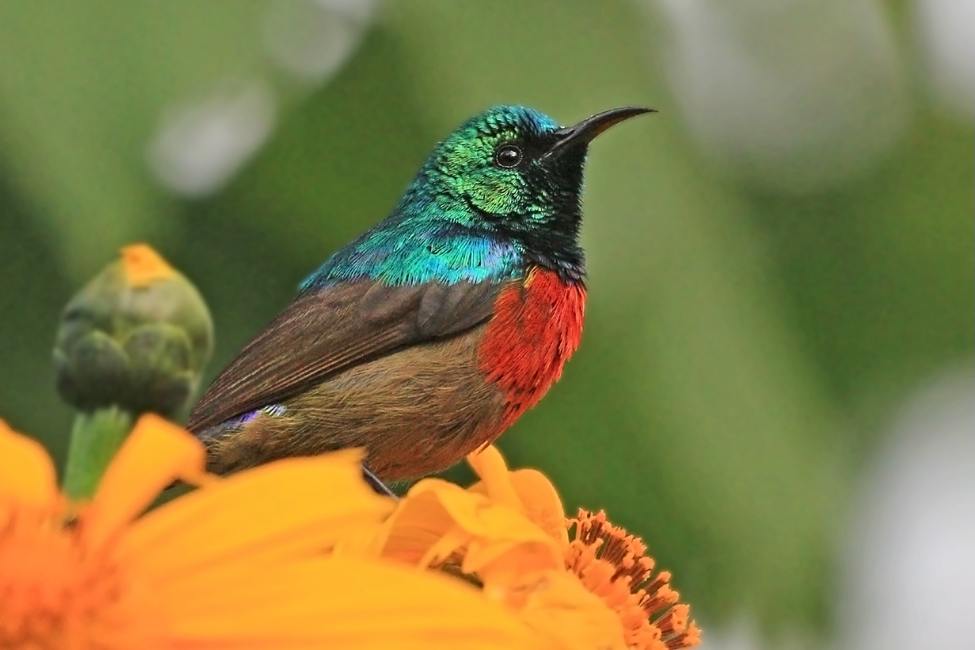
Northern double-collared sunbirds are among the many avian species that frequent Bwindi Impenetrable Forest. Photo by Charles J. Sharp of Sharp Photography.
Birdwatching
Birders can explore forest trails in search of colorful avian species, including Grauer’s broadbill, bar-tailed trogon, and dusky crimsonwing. The Ruhija sector of Bwindi is particularly known for its excellent birding opportunities, with 541 different species spotted there over the years.
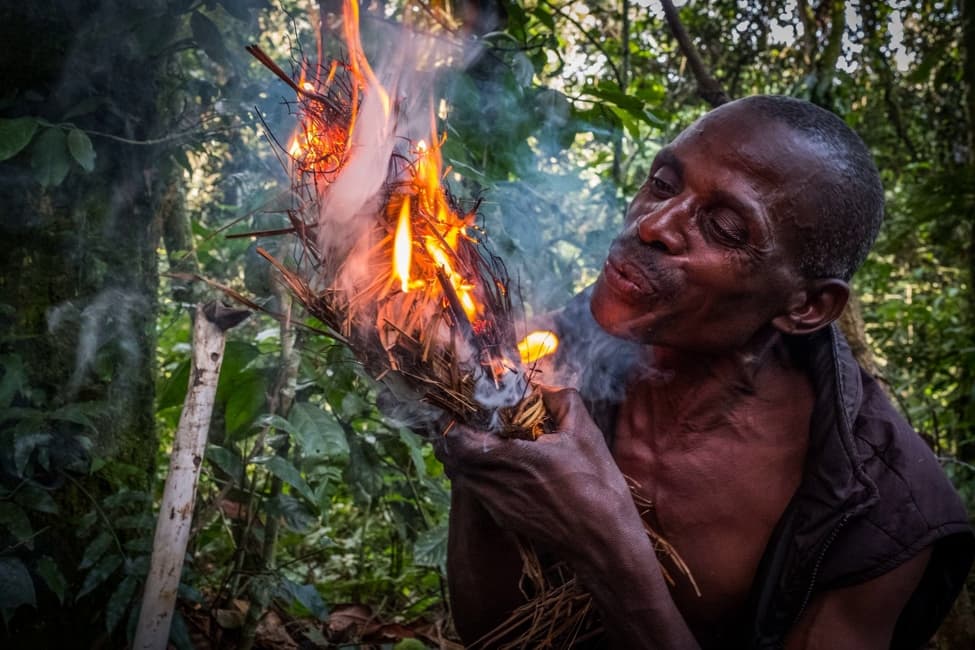
A Batwa man demonstrates traditional fire-starting techniques near Bwindi Impenetrable Forest National Park, Uganda.
Cultural Encounters
Immerse yourself in the culture and traditions of the local communities surrounding Bwindi Impenetrable National Park.
Learn about the lives of the Batwa people, who for generations made the Bwindi Impenetrable Forest their home. Take a guided walk to learn about medicinal plants used by the Batwa for generations, and witness age-old hunting techniques firsthand.
Or stretch your skills by cooking traditional dishes with women from the Bakiga ethnic group or learning basket-weaving techniques from them. You can also purchase beautiful traditional crafts such as mats, wood carvings, dyed clothes, weavings, and much more from local artisan cooperatives that support families, schools, and community development.
Learn more about these and other incredible cultural experiences in Uganda.
When to Visit Bwindi Impenetrable National Park
Even though it’s close to the equator, Bwindi Impenetrable Forest National Park benefits from mild temperatures year-round thanks to elevations of 3,000 to 8,500 feet above sea level. You can expect highs in the mid-70°F range during the day and lows at night of about 50°F.
The months of June to August and December to February are ideal for visiting Bwindi due to drier weather conditions that facilitate wildlife sightings and make gorilla trekking easier.
For birders, the preferred months are March to May and September to November, when many birds are in breeding plumage and are easily found through their calls. Gorilla trekking continues during these parts of the year, but if capturing the experience through photographs is important to you, keep in mind that rain could interfere with taking clear pictures.
Rains are heaviest from April to May and October to November, which can lead to slippery trails and challenging terrain. During these months, you will also have fewer options for accommodations, since some lodges shut down completely until drier weather returns.
Visit Bwindi on These Safaris
Plan Your Visit
Bwindi Impenetrable Forest plays a crucial role in regulating local climate patterns, maintaining soil fertility, and providing water sources for surrounding communities. Its preservation is essential for the conservation of biodiversity and the well-being of both wildlife and people.
Despite its protected status, Bwindi Impenetrable Forest faces threats from habitat loss, poaching, and human-wildlife conflict. Conservation efforts led by government agencies, NGOs, safari camps and lodges, and local communities aim to safeguard the forest and its inhabitants for future generations.
Tourism in Bwindi contributes to conservation not only through park fees, but also by bringing in revenue that funds jobs, schools, and community development projects. When residents experience less poverty and increased opportunities, they no longer turn to poaching or habitat destruction to support their families, and they embrace conservation as something that benefits wildlife and humans alike.
Learn more about how your Bwindi safari can contribute to conservation. Contact Ujuzi today.
Sign up for the Ujuzi Newsletter!
From top travel tips to innovative safaris and conservation movement, get inspired to plan your next African safari!


